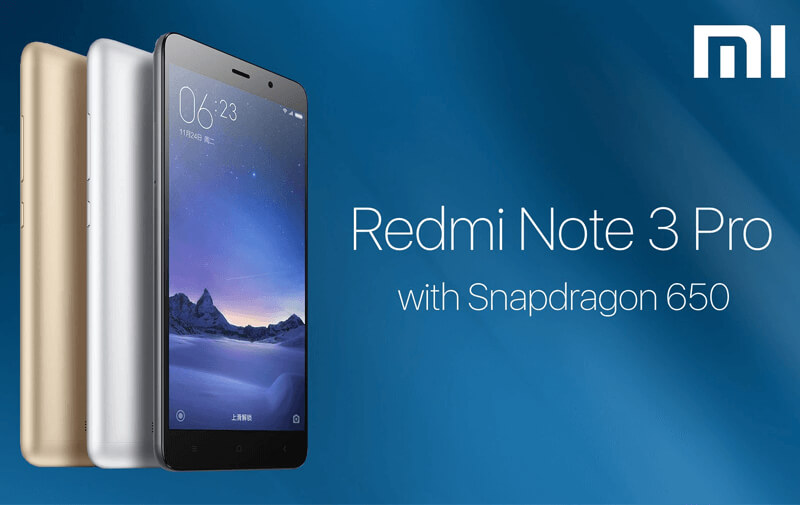Xiaomi’s Redmi series have been gaining popularity among Smartphone users over the past few years and for good reasons. Its low price points and amazing features have given them a vivid competitive advantage against competitors like Samsung and Apple. So much so that even other Chinese players have found them hard to compete with. Xiaomi has since been cranking out quality Smartphones and becoming one of the leading Smartphone brands in recent years.
This year, Xiaomi has introduced its trump cards, the Xiaomi Redmi Note 3, to capture the low-mid end market, being the successor of one of Xiaomi’s best-selling phone series, Redmi Note. Once again, Xiaomi has proven itself to be a company which is capable of coming up with great design and build quality.
After pushing powerful components and cutting prices, Xiaomi has started to focus on premium aesthetics and build quality, which appeals more to its users. This new budget-centric smartphone will surprise its users with its array of flagship and premium features such as its metallic design, excellent build, as well as its fingerprint sensor.
Full-Metal Body Featuring a Fingerprint Scanner
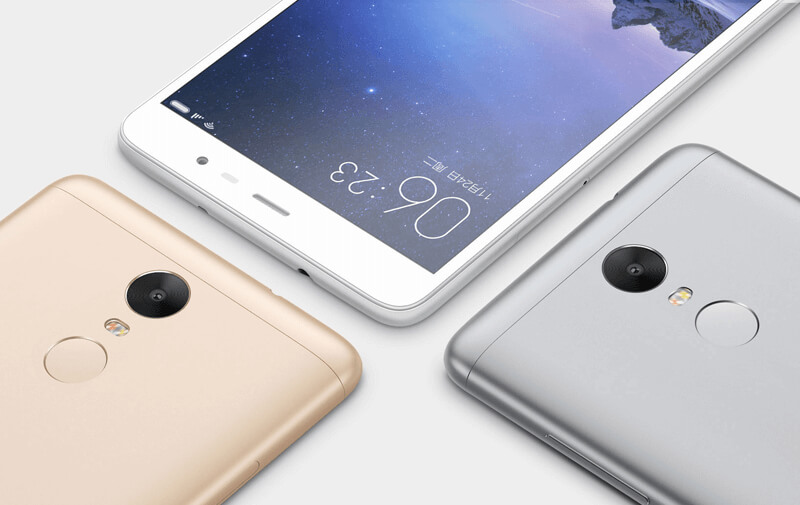
With most Smartphone makers now using metal builds for their upcoming smartphones, it is not surprising that Xiaomi is also jumping on this bandwagon with its latest Redmi Note series. Although the Redmi Note 3 may feature some design elements of its predecessor, it is the first Xiaomi Smartphone that sports an all metal body which gives it a more premium look as compared to the matte finish plastic build of the Redmi Note 2. It is incredibly gorgeous in its gold incarnation (which is also available in dark grey and silver) with a sandblasted smooth outer shell and featuring a 5.5-inch full-HD IPS display. There is a thin, glossy rim that runs along the edge of the front facia, which is elevated above the rest of the front display which helps to protect it from scratches when the phone is placed face-down.
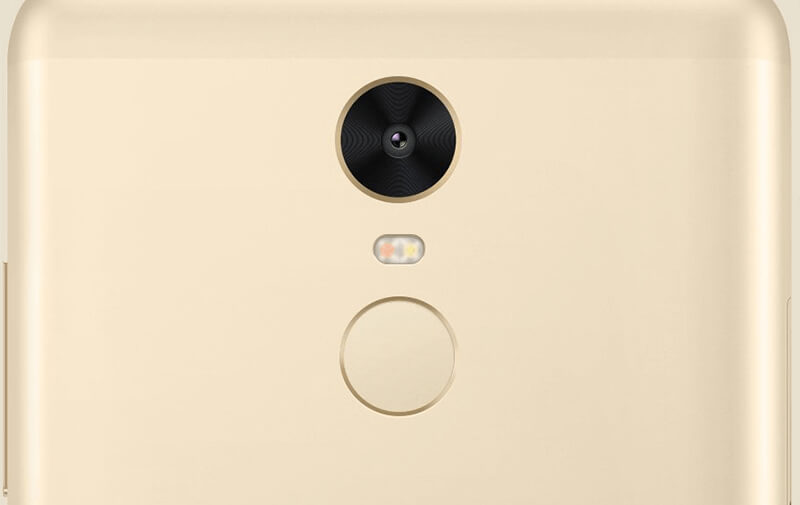
Turn the device around and the resemblance to the rear side on the Meizu MX5 is uncanny. This new device also features a round fingerprint scanner, located just below the 16MP camera on the rear side, allowing its users to use the fingerprint scanning capability more efficiently. The smooth matte finishes of the metal body help to prevent unwanted fingerprints and provide a better grip for its users. Taking a closer look at the device, the power button and volume controls are spotted on the right side of the Note 3, and provide exceptional tactile feedback and responsiveness.
While on its left, the device houses the SIM card tray which can accommodate both a micro-SIM card and a nano-SIM card (or a microSD memory card). Both slots are capable of supporting 4G network.
It is surprising that the Redmi Note 3 can include an aluminium body with so many aesthetic details in a Smartphone that costs below S$300, the kind of premium feel and build quality that is unseen for a device at this price point.
Fingerprint Sensor for Added Security
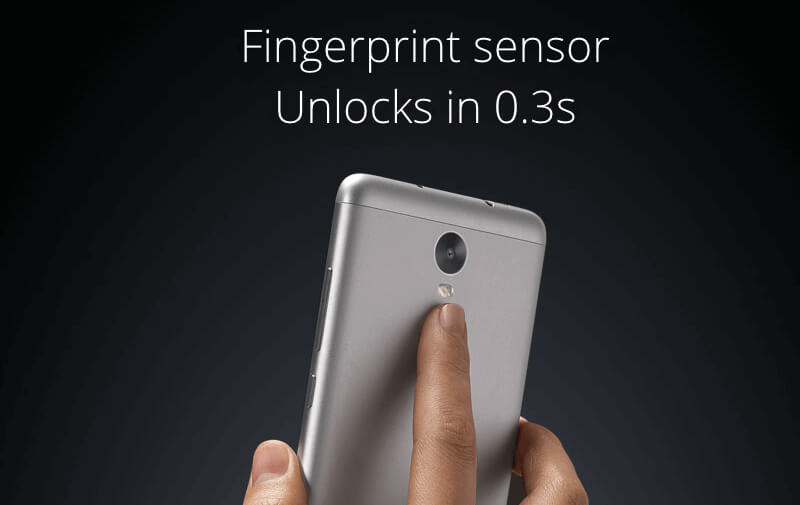
Fingerprint sensors are making smartphones personal and more secure at an entirely whole new level, and the Redmi Note 3 is the company’s first smartphone to incorporate this fingerprint scanning technology. The scanning device uses Trustonic’s TEE chip-level fingerprint security which is at the same level of protection as that of the Apple’s Touch ID. This new feature allows users to unlock their phones in just 0.3 seconds and with just a contact on the fingerprint sensor with the finger. For the Redmi Note 3, this security enclave is created with the help of Qualcomm Secure Execution Environment.
Other than for unlocking purposes, the fingerprint sensor can also be used to enable Child mode and File Explorer, allowing its users to have more control over their devices.
Just a small note to users is that the Redmi Note 3 will need to take about 12 scans to register a fingerprint and to setup the feature. Users can register up to five fingerprints on their devices.
Super Performance with Qualcomm Snapdragon 650
Redmi Note 3 is really fast – flagship fast. The device might be a low budget smartphone but there is certainly nothing low-end about the power it contains. It is fuelled by a Qualcomm Snapdragon 650 chipset paired with an Adreno 510 GPU and 3GB RAM. The Snapdragon 650 packed in the device has a hexa-core processor with two Cortex A72 cores and four Cortex A53 cores. Like its predecessor, the Note 3 delivers more performance than its price tag would suggest. Everything is very smooth, and minimal lag is experienced when running more processor-intensive tasks. All in all, the Redmi Note 3 excels in performance when compared with competition in this price range.
MIUI 7 based on Android 5.1.1 Lollipop

The Redmi Note 3 runs on MIUI 7 on top of its Android 5.1.1 Lollipop, similar to the Redmi Note 2. On the Note 3, the MIUI 7 interface has been optimized to run 30% faster; it is fast and supports a theme store with a diverse selection of options to customize the phone. MIUI 7 also has a bunch of well-designed apps for things like email, notes, data usage tracking, remote controls for appliances and texting for its users. Topped up the MIUI 7 is a new feature that allows four individualized UI themes which will offer different characters to the phone – High Lief, Rose, Pink Blush and Ocean Breeze.
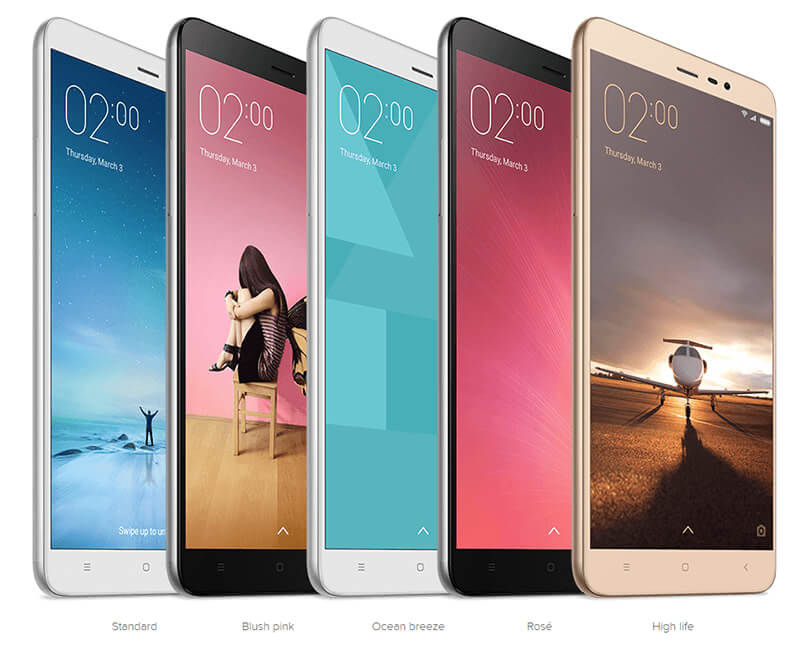
Xiaomi has done a fantastic job with its theme store which allows its users to switch up the look and feel of the Note 3 with just a couple of taps, and there is an ever-expanding range of themes to choose from. Overall, MIUI 7 offers a pleasant user experience and performs very well across the board.
16 MP Sensor Focusing on Quality

Xiaomi Redmi Note 3 sports a 16-megapixel rear camera and a 5-megapixel front-facing camera. The rear camera has a wide f/2.0 aperture which allows both landscapes and macro shots captured in daylight with good details. Colour reproduction is excellent too.
In addition to its high megapixel count, Redmi Note 3 has dual ISP processing capability for producing exceptional image quality. Photos produced by the device have visibly lesser noise and enhanced dynamic range. Xiaomi has also added on the timelapse and slow motion feature among other features for video shooting as well along with a full-HD video recording support.
Redmi Note 3 Key Features
Full Metal Body – Sturdy and resilient frame which has an added elegance in its design.
16 MP Camera – Strength in producing professional quality photos with 0.1s Phase Detection Autofocus (PDAF) and powerful dual image signal processor. Paired with its 5MP front-facing camera.
Fingerprint Sensor – First device by Xiaomi with this feature for added security.
Dual Sim – Ability to accommodate a micro-SIM card and a nano-SIM card. Best of both worlds!
MIUI 7 – Beautiful and intuitive, with the ability to customize the phone with thousands of themes, wallpapers, icons and more.
My Take on Xiaomi Redmi Note 3
The Redmi Note 3 is a well-rounded smartphone, both literally and figuratively, that punches above its weight. The full metal body and fingerprint sensor are good-to-have additions to the Redmi series, and make the Note 3 feels relevant in 2016. It offers exemplary build quality, solid performance, and a great feature set. The MIUI 7 has also been improved as compared to previous versions and it is quite likable.
Powered by Snapdragon 650, it is primed to be one of the most powerful low-end devices in the market right now. In conclusion. I find that Xiaomi Redmi Note 3 is easily one of the best smartphones available in the market at this price point. A phone that packs all the essential features needed, as well as powerful add-ons that make this device hard to resist.
Looking ahead, I have high hopes for what Xiaomi plans to bring in to compete with its competitors. It is surely a brand that we need to keep a lookout for.
